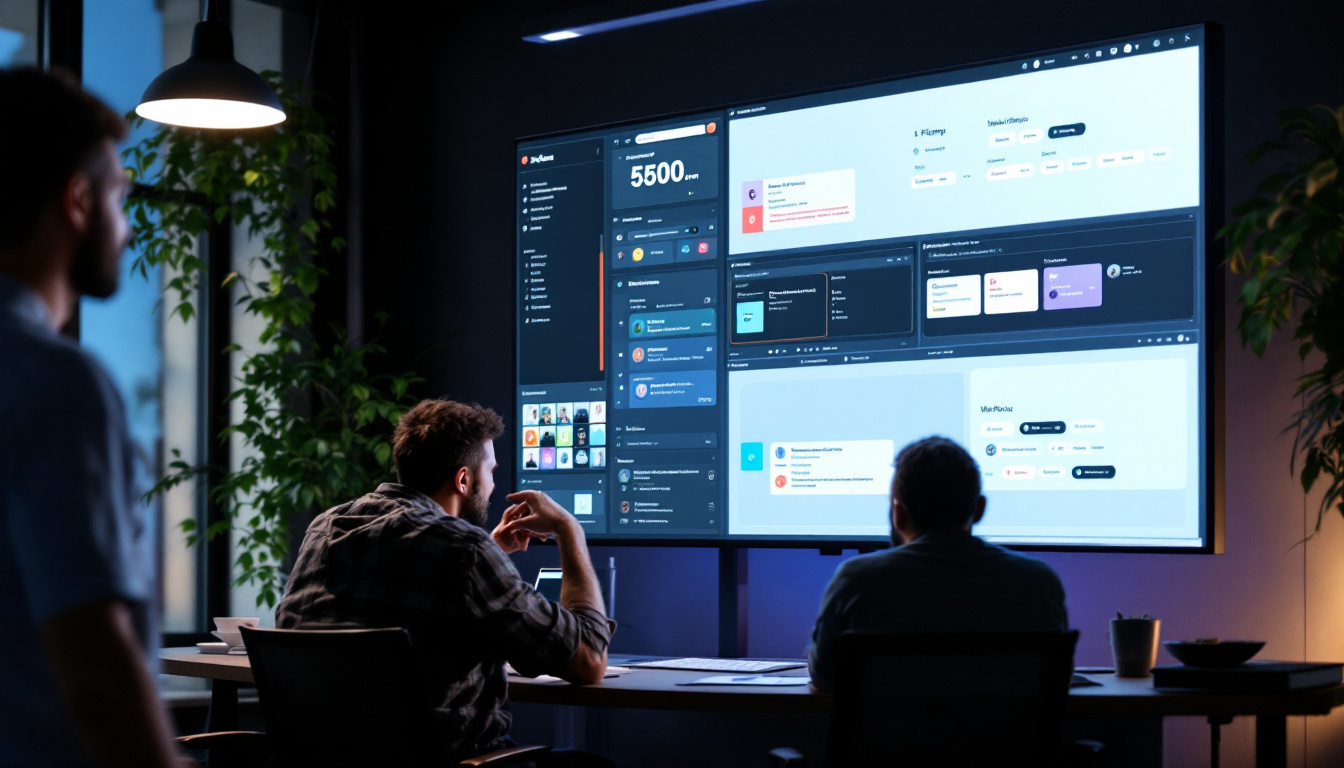Top Figma to Webflow Agency: Transforming Designs into Interactive Websites
.webp)
Top Figma to Webflow Agency: Transforming Designs into Interactive Websites
In the ever-evolving landscape of web design, the transition from static designs to interactive websites is a critical phase that can make or break a project. Figma, a leading design tool, is widely used for creating stunning UI/UX designs, while Webflow stands out as a powerful platform for building responsive websites without extensive coding. The synergy between these two tools can lead to remarkable digital experiences when executed correctly. This article explores the top agencies specializing in transforming Figma designs into fully functional Webflow websites, showcasing their expertise and the benefits of choosing the right partner for your project.
The Importance of Figma to Webflow Conversion
Understanding the significance of converting Figma designs into Webflow websites is essential for any organization looking to enhance its online presence. This process not only ensures that the design vision is accurately represented but also optimizes the website for performance and user experience.
Seamless Design Implementation
One of the primary reasons for converting Figma designs to Webflow is the seamless implementation of design elements. Figma allows designers to create intricate layouts, animations, and interactions. When these designs are translated into Webflow, the result is a website that closely mirrors the original vision, maintaining the integrity of the design throughout the development process. This fidelity is crucial, as it helps to avoid the common pitfalls of miscommunication between design and development teams, ensuring that the final product aligns perfectly with the initial concept.
Enhanced User Experience
Webflow provides designers with the tools to create responsive and interactive websites that enhance user experience. By leveraging the capabilities of Webflow, agencies can implement features such as dynamic content, animations, and transitions that engage users and encourage interaction. This results in a more immersive experience that can lead to higher conversion rates and user satisfaction. Moreover, the ability to customize interactions and animations in Webflow allows designers to create unique storytelling experiences that resonate with users, making the website not just a platform for information but a memorable journey that reflects the brand's identity.
Efficiency in Development
Converting Figma designs to Webflow streamlines the development process. Webflow’s visual editor allows for rapid prototyping and testing, enabling agencies to iterate quickly based on client feedback. This efficiency not only saves time but also reduces costs, making it an attractive option for businesses of all sizes. Additionally, the integration of Figma with Webflow fosters collaboration among team members, as designers and developers can work simultaneously on the same project. This collaborative approach minimizes the risk of errors and enhances the overall quality of the final product, ensuring that both aesthetic and functional aspects are finely tuned before launch.
Scalability and Future-Proofing
Another significant advantage of converting Figma designs to Webflow is the inherent scalability of the platform. As businesses grow and evolve, their websites often require updates and new features to keep pace with changing market demands. Webflow's flexible architecture allows for easy adjustments and expansions, making it simple to add new pages, functionalities, or even entirely new sections without disrupting the existing design. This future-proofing aspect is particularly beneficial for startups and small businesses that anticipate rapid growth, as it allows them to invest in a robust web solution that can adapt to their needs over time.
SEO Optimization
In addition to design and user experience, converting Figma designs to Webflow can significantly enhance a website's search engine optimization (SEO). Webflow is built with clean code and offers built-in SEO features that allow designers to optimize their sites for search engines easily. This includes customizable meta tags, alt text for images, and mobile responsiveness—all critical factors that contribute to better search rankings. By ensuring that the design is not only visually appealing but also optimized for search engines, businesses can attract more organic traffic and improve their online visibility.
Criteria for Selecting a Figma to Webflow Agency
Choosing the right agency to handle the conversion of Figma designs to Webflow is crucial. Several factors should be considered to ensure that the selected agency aligns with the project’s goals and requirements.

Portfolio and Case Studies
A strong portfolio is a clear indicator of an agency's capabilities. Reviewing case studies can provide insights into the agency’s design and development process, showcasing their ability to handle projects similar to yours. Look for diversity in their work, as this demonstrates adaptability and creativity in solving design challenges.
Client Testimonials and Reviews
Client feedback can offer valuable perspectives on an agency’s reliability and quality of work. Positive testimonials and reviews can build confidence in the agency’s ability to deliver on promises. Consider reaching out to past clients for firsthand accounts of their experiences, which can help in making an informed decision.
Technical Expertise
While design is crucial, the technical proficiency of the agency in Webflow is equally important. Ensure that the agency has a deep understanding of Webflow’s capabilities, including custom code implementation, SEO best practices, and responsive design techniques. This expertise will ensure that the final product is not only visually appealing but also functional and optimized for search engines.
Top Agencies Specializing in Figma to Webflow Conversion
With numerous agencies available, selecting the right one can be daunting. Here are some of the top agencies known for their expertise in converting Figma designs into Webflow websites.

Agency A: Design Meets Functionality
Agency A has established itself as a leader in the Figma to Webflow space, known for its meticulous attention to detail and commitment to client satisfaction. Their team of designers and developers work closely with clients to ensure that every aspect of the design is faithfully translated into the final website.
The agency's portfolio showcases a variety of projects, from e-commerce sites to corporate landing pages, all designed with user experience in mind. Their process includes thorough testing and optimization to ensure that the final product performs well across all devices and browsers.
Agency B: Innovative Solutions for Modern Brands
Agency B prides itself on delivering innovative solutions tailored to modern brands. Their approach combines cutting-edge design with the latest web technologies, resulting in websites that are not only beautiful but also highly functional.
With a strong focus on collaboration, Agency B engages clients throughout the design and development process, ensuring that the final product aligns perfectly with the brand’s vision. Their expertise in Webflow allows them to implement advanced features that enhance interactivity and engagement.
Agency C: Streamlined Processes for Quick Turnarounds
Agency C has gained a reputation for its streamlined processes that facilitate quick turnarounds without compromising quality. Their team is adept at using Figma and Webflow to create websites that are both visually stunning and technically sound.
By leveraging automation and efficient workflows, Agency C can deliver projects on time, making them an ideal choice for businesses with tight deadlines. Their commitment to transparency and communication ensures that clients are kept informed throughout the project lifecycle.
Benefits of Working with a Figma to Webflow Agency
Engaging a specialized agency for Figma to Webflow conversion offers numerous advantages that can significantly impact the success of a project.

Expert Guidance
Working with a dedicated agency provides access to a team of experts who understand the nuances of both Figma and Webflow. Their insights can guide clients through the design and development process, helping to avoid common pitfalls and ensuring that best practices are followed.
Cost-Effectiveness
While hiring an agency may seem like a significant investment, it can be cost-effective in the long run. Agencies have the tools and expertise to complete projects efficiently, reducing the likelihood of costly revisions and delays. Additionally, a well-executed website can lead to increased traffic and conversions, providing a strong return on investment.
Ongoing Support and Maintenance
Many agencies offer ongoing support and maintenance services after the initial project is completed. This can be invaluable for businesses looking to keep their websites updated and secure. Regular maintenance ensures that the website remains functional and relevant, adapting to changing trends and technologies.
Common Challenges in Figma to Webflow Conversion
Despite the advantages, converting Figma designs to Webflow is not without its challenges. Understanding these potential obstacles can help businesses prepare and mitigate risks.
Design Fidelity
One of the most significant challenges is maintaining design fidelity during the conversion process. Complex designs with intricate details may not always translate perfectly into Webflow. Agencies must carefully evaluate each element to ensure that the final product aligns with the original vision.
Responsive Design Issues
Creating a responsive website that looks great on all devices can be challenging, especially when dealing with intricate layouts. Agencies must have a solid understanding of responsive design principles and Webflow’s capabilities to ensure that the website functions seamlessly across various screen sizes.
Integration with Other Tools
Many businesses rely on various tools and platforms for their operations, and integrating these with a new Webflow site can pose challenges. Agencies must be adept at integrating third-party tools, such as CRM systems or e-commerce platforms, to ensure a smooth user experience and operational efficiency.
Future Trends in Figma to Webflow Conversion
The digital landscape is continually evolving, and staying ahead of trends is essential for agencies specializing in Figma to Webflow conversion. Here are some emerging trends to watch for in the coming years.
Increased Use of AI
Artificial intelligence is poised to revolutionize the design and development process. From automating repetitive tasks to enhancing user personalization, AI can streamline workflows and improve efficiency. Agencies that embrace AI technologies will likely have a competitive edge in the market.
Focus on Accessibility
As awareness of web accessibility grows, agencies must prioritize creating inclusive designs that cater to all users. This includes implementing best practices for accessibility in both Figma designs and Webflow development, ensuring that websites are usable by individuals with disabilities.
Emphasis on Performance Optimization
Website performance is becoming increasingly important, with search engines prioritizing fast-loading sites. Agencies will need to focus on optimizing designs for speed and performance, utilizing Webflow’s capabilities to create lightweight, efficient websites that enhance user experience.
Conclusion
Transforming Figma designs into interactive Webflow websites is a complex yet rewarding process that requires expertise and attention to detail. By choosing the right agency, businesses can ensure that their design vision is realized while benefiting from the technical advantages that Webflow offers. Whether it’s enhancing user experience, streamlining development, or optimizing for performance, the right partner can make all the difference in creating a successful online presence.
As the digital landscape continues to evolve, staying informed about trends and best practices will be crucial for agencies and businesses alike. By embracing innovation and prioritizing user experience, the journey from Figma to Webflow can lead to exceptional results that resonate with users and drive business success.
Ready to Elevate Your Online Presence?
At Ammo Studio, we specialize in bringing your Figma designs to life with Webflow's robust platform. Our commitment to excellence ensures that your website is not only a reflection of your brand's aesthetic but also a high-performing digital experience that drives results. If you're looking to create a website that stands out in today's competitive landscape, Book A Call with us and discover how we can help you convert visitors into loyal customers, attract the best talent and investors, and supercharge your marketing strategies.
Table of contents

Looking for solution for your company?
Got questions for us? We got you!
Let’s Build What’s Next
Whether you're building your first product or evolving a mature platform, we’d love to help you craft what’s next.
.webp)

.webp)

.webp)